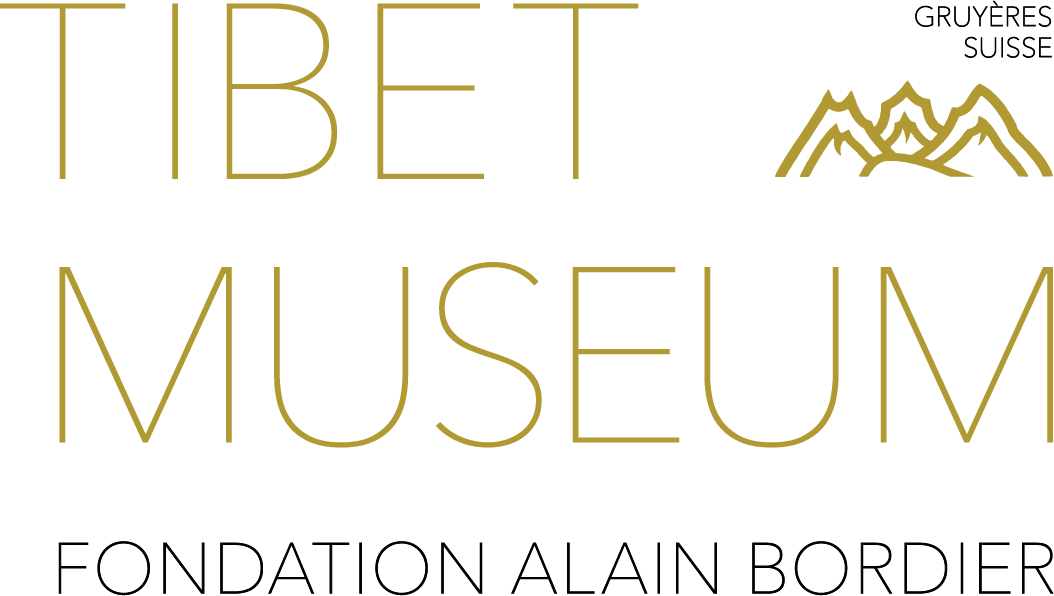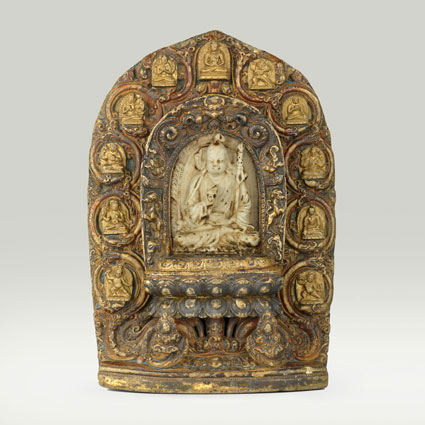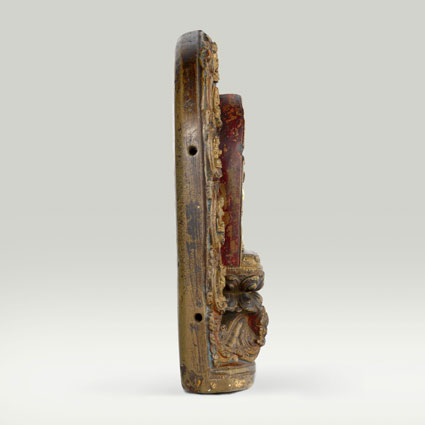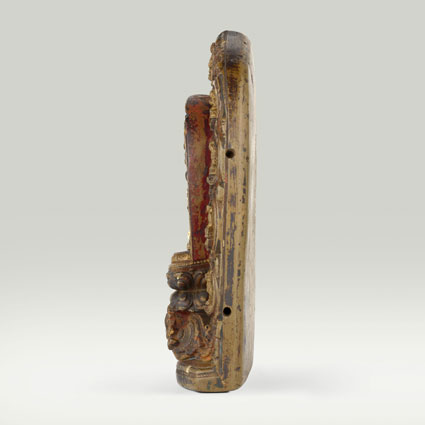Padmasambhava (Guru Rinpoche) – "The Lotus-Born" and his eight manifestations
See it in the Museum
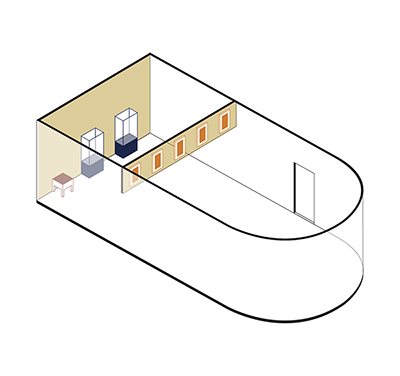
Chapel
Orientation 3
Display 5

ABS 201
Code: ABS 201
Country: Tibet
Style: Late Pala Style
Date: 1250 - 1350
Dimensions in cm WxHxD: 15.1 x 23.5 x 4.9
Materials: Painted Stone (possibly Phyllite)
Padmasambhava – the "Lotus Born" and his eight manifestations
The famous Indian tantric master Padmasambhava, "the Lotus Born" appears in the middle of this sculpture under his traditional aspect: legs crossed in meditation, wearing the triple royal garment and his distinctive lotus hat. His right hand holds a vajra before his heart and his left rests in contemplation in his lap, supporting a skull cup. The tantric staff khatvanga in the crook of his arm is a secret representation of his consort. Padmasambhava rests on a lotus flower emerging from a lake, as a reminiscence of his miraculous birth and an illustration of his name.
Other stalks emerge from the water forming vegetal scrolls enclosing multiple characters. They represent the eight principal manifestations of the Precious Guru, one of his epithets. These forms illustrate different passages from his miraculous life. The four figures to his right are from top to bottom: Orgyen Dorje Chang, Loden Chokse, Nyima Öser, and Sengge Dradrok. The four characters to his left are the Indian pandit Padmasambhava, Pema Gyalpo, Shakya Sengge and Dorje Trollö. The top of the sculpture gathers three tutelary deities: Amitayus the Infinite life Buddha, Avalokiteshvara, and Hayagriva in union. These three represent the Lotus family to which Padmasambhava belongs and of whom he is the manifestation.
Padmasambhava aka Guru Rinpoche is a key figure of Tibetan Buddhism as he is regarded as the master who established Buddhism in Tibet in the 8th century. Tibetans consider him as the Second Buddha.
The famous Indian tantric master Padmasambhava, "the Lotus Born" appears in the middle of this sculpture under his traditional aspect: legs crossed in meditation, wearing the triple royal garment and his distinctive lotus hat. His right hand holds a vajra before his heart and his left rests in contemplation in his lap, supporting a skull cup. The tantric staff khatvanga in the crook of his arm is a secret representation of his consort. Padmasambhava rests on a lotus flower emerging from a lake, as a reminiscence of his miraculous birth and an illustration of his name.
Other stalks emerge from the water forming vegetal scrolls enclosing multiple characters. They represent the eight principal manifestations of the Precious Guru, one of his epithets. These forms illustrate different passages from his miraculous life. The four figures to his right are from top to bottom: Orgyen Dorje Chang, Loden Chokse, Nyima Öser, and Sengge Dradrok. The four characters to his left are the Indian pandit Padmasambhava, Pema Gyalpo, Shakya Sengge and Dorje Trollö. The top of the sculpture gathers three tutelary deities: Amitayus the Infinite life Buddha, Avalokiteshvara, and Hayagriva in union. These three represent the Lotus family to which Padmasambhava belongs and of whom he is the manifestation.
Padmasambhava aka Guru Rinpoche is a key figure of Tibetan Buddhism as he is regarded as the master who established Buddhism in Tibet in the 8th century. Tibetans consider him as the Second Buddha.
